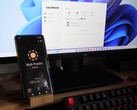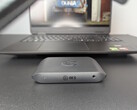Every now and then, I think about getting a wireless charging pad for my phone. Sure, I’m pretty late to the party — but one question keeps holding me back (along with a bit of laziness to actually look it up): how much energy does wireless charging really waste?
So, I finally decided to find out and do some quick math. I started by looking into the efficiency of both wired and wireless charging. The numbers come from a report by the International Energy Agency titled “Energy Use for Wireless Charging.”
According to that report, wireless charging a battery consumes about 35 percent more energy. Other sources (like hichaintech.com) note that wired charging loses about 5–10 percent of energy as heat, meaning an efficiency of around 90–95 percent. With Qi, MagSafe, and similar systems, you also have coil losses that depend on distance, alignment, and power level — overall efficiencies range from 60 to 80 percent, or a loss of 20–40 percent.
Let’s put that into perspective with a single smartphone. Assuming a 15 Wh battery (around 4,000 mAh) that’s fully charged once a day, the numbers look like this:
Wired charging (90% efficiency)
15 Wh / 0.9 = 16.7 Wh
Annual consumption: 16.7 Wh × 365 = 6,095 Wh = 6.1 kWh
Annual cost: 6.1 kWh × €0.30 = €1.83
Wireless charging (≈70% efficiency)
15 Wh / 0.7 = 21.4 Wh
Annual consumption: 21.4 Wh × 365 = 7,811 Wh = 7.8 kWh
Annual cost: 7.8 kWh × €0.30 = €2.34
For an individual, the cost difference is trivial. But ecologically, things get interesting — there are billions of smartphones in use worldwide.
As of recent estimates, there are around 7.3 to 7.4 billion smartphones in use globally. Back in 2021, about 1 billion of them (roughly 13.5%) supported wireless charging, according to Strategy Analytics. Today, that share is likely higher — perhaps 15 to 25 percent. Not all of those phones are actually charged wirelessly, but let’s assume 1 billion devices are, each using 1.7 kWh more per year (as calculated above).
1 billion devices × 1.7 kWh = 1.7 TWh per year (1 TWh = 1 billion kWh = 1,000,000,000 kWh)
That means the global extra energy demand caused by wireless phone charging could total about 1.7 TWh annually. With an average household using around 2,500 kWh per year, that’s enough to power about 680,000 homes for a year.
Or to put it another way: the energy wasted through Qi and similar wireless charging could keep the entire German city of Leipzig or Hannover running for a year — or charge roughly 773,000 electric cars (assuming each consumes 2,200 kWh annually). Generating that much energy would require over 200 wind turbines (each rated at 3 MW with 30% average utilization).






















